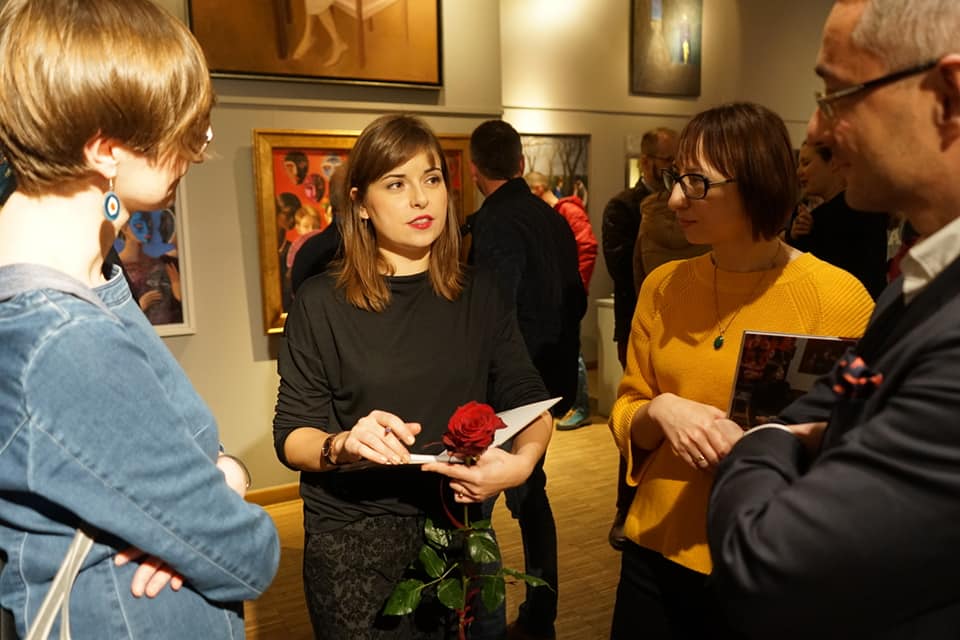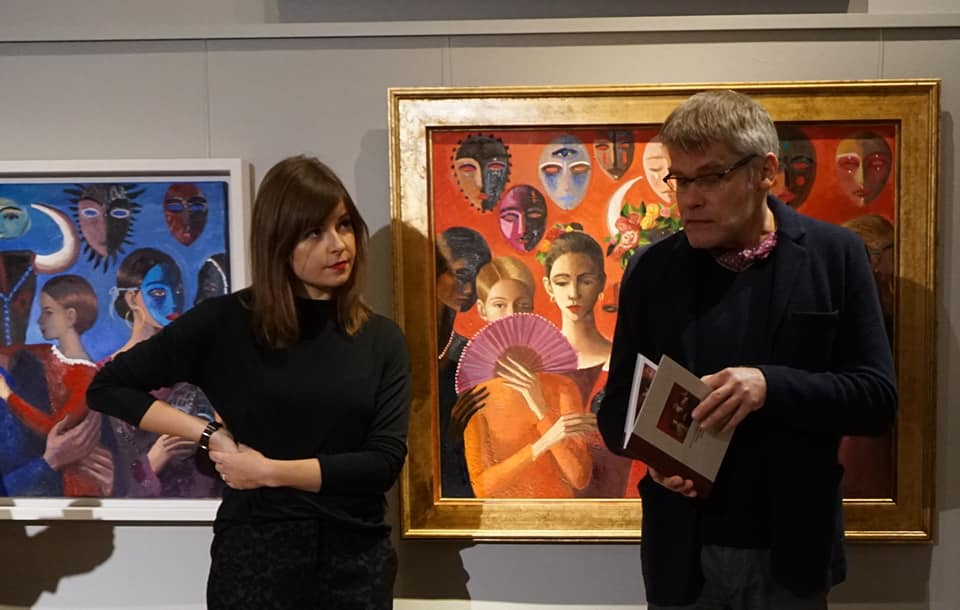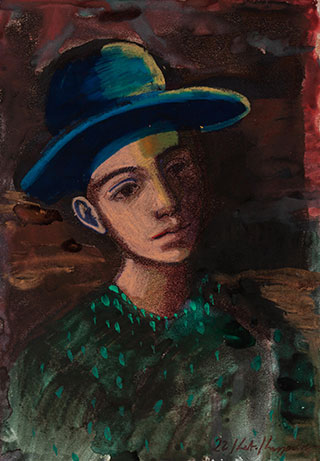Blue Glass
The admiration for the works of a very young artist always carries a risk. We admire what is here and now, but soon we expect more fireworks, more growth, more surprises. We want to remain in a state of admiration.


When we presented the first exhibition of works by Katarzyna Karpowicz at Galeria Art seven years ago, our task was easy: to share our admiration with a wider audience.
The young painter, freshly graduated from the Krakow Academy of Fine Arts, gained a faithful group of fans right from the get-go. The formal beauty and seeming naïvete of the subjects of her works evoked admiration and enchanted audiences. We entered the world of her paintings, we read them like fairy tales for adults.
In Katarzyna Karpowicz’s works, the painting is always the result of deeply experiencing reality, of observations and feelings. The seemingly unreal scene flows from events, meetings and conversations. Life experiences give rise to new painting series.
In recent years, Katarzyna has travelled around the world, changing her place of residence several times. Longer stays in Budapest, in the English countryside or in Spain allowed her to discover a new trove of motifs and human stories. She filtered them through her sensitivity and retold them in her own way on her canvases. She still conducts a subtle dialogue, in her own way, with the masters, such as Balthus, Picasso and magical realism painters. She draws inspiration from literature and film, most recently Spanish. Now, thanks to her paintings, we will discover discover Victor Erice’s films.
Each of her paintings is metaphysical. Each one is created in a state of focus, and the viewer can feel it. In the lens of the canvas, the artist concentrates what is real with what is imaginary, the concrete and the premonition. Thus the title of the exhibition - Blue Glass - because the world that Katarzyna Karpowicz presents is only seemingly real, as if the artist were looking at it through a piece of blue glass.
One could consider this type of painting to be autobiographical. Look for the artist’s features in the beautiful faces of the women and children, take part in her journeys. But since, technically speaking, every work is autobiographical, let us look beyond this stereotype. Katarzyna Karpowicz’s works are deeply universal and existential, speaking about relations, expectations, hope and fears. The girl who, years ago put her heroines at the foot of the mountain or a great bear, huddled like children in their mother’s womb, and had the dream a dream of life, has become a woman. It is not without reason that masks appear so often in her paintings: the motif of playing and pretending, but even more the mature ability to cope in the world. And even if it is not immediately visible, there is a dose of humour, irony and tongue-in-cheek in all this lyricism.





















